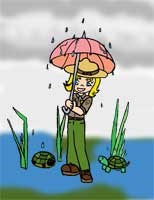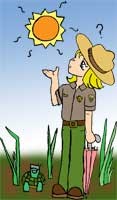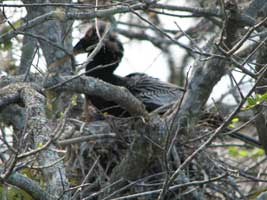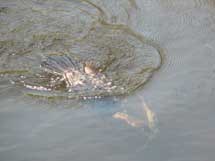|
Hello there, my fellow Everglades explorers! However, here in the Everglades we don’t really have the bitter cold frost of winter and we hardly even notice the changing color of leaves in the fall. Instead, what we notice changing the most is our water levels. 
In a typical year, the Everglades has a period of intense rains which we call our Wet Season. The wet season starts around the middle of May and continues through to November with the last major storms. If you've lived in Florida, you probably had to prepare for hurricane season which starts during our wet season in June. During this time, South Florida gets a lot of rain and everything gets really wet. 
The wet season is followed by a period of very little to almost no rain. This is the start of our second season, the Dry Season. The dry season, runs from December through April. During this season, everything starts to dry up in a short amount of time. In the Everglades, the water levels from month to month can change drastically. That’s part of the unique charm of this place! You would think that the animals and plants of the Everglades would find it nearly impossible just trying to survive. Strangely enough, these animals and plants are so well adapted to these two different seasons, that if we were to suddenly change them around it would cause chaos for the Everglades' wildlife. In other words, the Everglades would be out of balance. Here's one example that might help you better understand the importance of these seasons to the wildlife of the Everglades: When the dry season occurs, birds come from all over the United States and the world to get away from the cold and to nest around the Freshwater Slough in the pond apple trees. If you observed the birds year after year, you'd notice that nesting season always coincides with the dry season in the Everglades! During this time, all these birds are laying eggs and taking care of their babies. 
Why nest when everything is so dry? Wouldn't it be better for the birds to lay eggs when there is much more water during the wet season? Do you know the answer? 
Let me help you. Second, is it easier or harder for the parents to catch food for their babies in the dry season? It’s easier! When the water dries up, the fish are moved into a much smaller area of space making it easier for the parents to catch food (fish, crustaceans, and insects) for their babies. Try thinking of it this way! Imagine that you're by an Olympic size swimming pool and that someone has just thrown 100 quarters out into this huge pool. Then you are told that you have exactly 1 minute to dive in and collect as many quarters as you can. How many, out of the 100, would you be able to grab? What if that person went over to a kiddie size swimming pool and threw the 100 quarters into that pool instead? Which pool would be easier to collect the quarters from? 
Definitely the kiddie pool! It is much smaller and more shallow. That's how it is for birds too! As you can see, water is a pretty important topic here in the Everglades. However, we don't need to flood the area year round. Instead, the Everglades requires a careful balance of both the wet AND dry periods. Here in the Everglades we need:
To return to the main Welcome page click on |
Last updated: April 14, 2015
